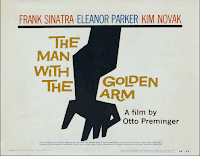After we created the the shot list and main idea for our short piece, we started to film it. However along the way we realised it was not as simple as it looked. Following the specific requirements, is slightly more challenging. For example the shot reverse shot proved to be a slight problem, in terms of the technique you used to film it.
There are two ways you can film a shot reverse shot. One way is by stopping and restarting the recording from different angles, the second way is by just positioning the camera in the middle and turning the camera left and right. Initially we tried the method where the camera was positioned in the middle, however the problem we were faced with was being able to cut the conversations in a way that the shot reverse shot was clear and meaningful.
Therefore our final decision was to re-film the scene by stoping and starting the recording.
Problems we have faced so far:
There were a few other minor problems that we faced and they consisted of setting the camera up with the tripod, trying to match on action a scene, however it did not work completely as we only had 2 shots and a match on action generally works better with 3 shots and finally a filming issue whereby in the background a classroom door was open, when it needed to be closed for the scene to flow correctly.
What we are going to do to resolve these problems?
To get the match on action editing technique to work we are going to film another shot from a different angle.
To get the scene to flow correctly we are going to take extra notice that the backdrop is set to fit the scene.
Problems-
After watching the final cut, we concluded that we had a few problems.
our first problem was that towards the end, the camera had cut off one of the actors head, half way through, the person manning the camera realised and moved the camera slightly to fit the persons head in. This as a result to not having a controlled camera which as an affect can decrease our mark significantly.
Secondly our shot reverse shot was not shot from the right angles. The camera needed to be further away.
Finally our use of match on action used three shots as needed- to represent the characters travels in a quicker way however didn't actually show the character sitting down, it just cut straight to us sitting down- therefore resulting in the shot not being clear.
Solutions-
To fix these issues we are going to conduct a second shot whereby we will take extra precautions with the use of editing in terms of the match on action and making each stage completely clear. In terms of camera use we will ensure the shot is properly framed each time we stop and start the recording to prevent any further errors.
Feedback
Our teacher has given us some feedback about our
video today and we are going to address the problems when we re-shoot and
re-edit within the next few days. He told us that out 180 degree angle was fine
and we had applied it correctly. The match on action shot that we had applied,
we had used the dissolve transition rather than a straight cut, from the
feedback we were given, we have been advised just to cut as we have been told
to definitely not use the dissolve effect. The third shot of our match on
action shot told us that we should show the characters sitting down so that we
are continuing to track the movement of the characters. Before the characters
enter the scene, we have been advised to have an establishing shot, we have
decided to ether have the camera looking at the door for a few seconds or we
will stand the camera far away from the door so the establishing shot shows a
lot of the background and then we will slowly zoom into the door to show that
something important could be happening in the video. With our teachers advice
we found problems with the characters sat outside the door, and
we couldn't see the mothers face when she was speaking, as our shot
reverse shot had failed later on in the video we are going to keep that
part how it is apart from filing the last clip as the sons head was cut off at
the top. The shot reverse shot is going to be filmed outside
the classroom from each point of view of each of the characters.
My evaluation of the first cut
When starting the first cut of this editing task, my initial thoughts were that by researching where people went wrong in the past, I would be able to prevent those mistakes. However this was no as easy as it looked. The attention to small details needed is essential. For example the simplest of things that the camera needs to be a few centimetres left or right to be able to fit the SRS shoot criteria.











